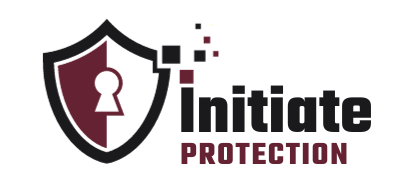Are you concerned about the safety of your Wi-Fi connection at home or when using public spaces? With the increasing reliance on wireless networks, it is important to ensure the security of your internet access. In this article, we will explore the potential risks of Wi-Fi networks and provide tips on safeguarding your connection. Your online security is in your hands, so let’s delve into the complexities of Wi-Fi security.
What Is Wi-Fi Security?
Wi-Fi security is the protection of wireless networks from unauthorized access and attacks. This involves implementing strong passwords, enabling network encryption, and using firewalls to block suspicious traffic. It is also important to regularly update router firmware and disable remote management to enhance security. Public Wi-Fi networks are especially vulnerable, so it is crucial to avoid accessing sensitive information or making online transactions on such networks.
Remember, ensuring Wi-Fi security is crucial for safeguarding personal data and preventing unauthorized access to your network. According to a survey, 71% of public Wi-Fi users are at risk of cyberattacks due to inadequate security measures.
Why Is Wi-Fi Security Important?
Maintaining Wi-Fi security is crucial in safeguarding your personal information and sensitive data from cyber threats. Without adequate security measures, hackers can intercept your Wi-Fi connection and gain unauthorized access to your passwords, financial details, and other confidential information. Moreover, unsecured Wi-Fi networks can be exploited to launch malicious attacks on other devices connected to the same network.
By implementing strong passwords, utilizing encryption protocols like WPA2, and regularly updating router firmware, you can significantly reduce the risk of unauthorized access and protect your privacy. History has shown that lax Wi-Fi security has resulted in significant data breaches, such as the 2014 Home Depot hack that compromised millions of customer credit card details.
What Are the Risks of Unsecured Wi-Fi Networks?
Using unsecured Wi-Fi networks poses significant risks to your online security and privacy. These networks lack encryption, making it easier for hackers to intercept your data. Here are the potential dangers of connecting to unsecured Wi-Fi networks:
- Data interception: Hackers can easily capture sensitive information, such as passwords, credit card details, and personal data.
- Malware distribution: Unsecured networks are prime targets for malware, exposing your devices to viruses and other harmful software.
- Man-in-the-middle attacks: Attackers can insert themselves between you and the websites you visit, monitoring and altering your online activities.
- Identity theft: Unsecured networks make it easier for hackers to steal your identity and impersonate you online.
To protect yourself, it is best to avoid using unsecured networks for sensitive activities and always connect to secure, encrypted networks. A VPN can provide an extra layer of protection by encrypting your internet traffic. Additionally, regularly updating your devices with the latest security patches can help prevent potential vulnerabilities. Stay alert for any signs of a compromised network and take immediate action if necessary. Stay safe and secure while browsing online!
How Can You Secure Your Wi-Fi Network at Home?
In today’s digital age, securing your Wi-Fi network is crucial to protect your personal information and safeguard your connection. With the rise of remote work and online activities, it’s important to take measures to secure your home Wi-Fi network. In this section, we’ll discuss four simple yet effective ways to secure your Wi-Fi network at home. By implementing these strategies, you can ensure that your network is safe from potential cyber threats and maintain your online privacy.
1. Change Default Router Settings
Changing the default settings of your router is crucial for enhancing the security of your Wi-Fi network at home. Follow these steps to ensure a secure network:
- Access the router settings by entering the default gateway IP address in a web browser.
- Modify the default username and password to a unique and strong combination.
- Update the router’s firmware to the latest version to fix any potential security vulnerabilities.
- Disable remote management to prevent unauthorized access to the router.
- Enable MAC address filtering to only allow known devices to connect to the network.
- Turn off SSID broadcasting to make the network less visible to potential attackers.
- Enable WPA2 or WPA3 encryption for better protection of network traffic.
- Set up a guest network to separate guest devices from the main network.
Implementing these changes will significantly reduce the risk of unauthorized access to your Wi-Fi network.
2. Use Strong Passwords
Using strong passwords is crucial to ensure the security of your Wi-Fi network. Follow these steps to create strong passwords:
- Combine uppercase and lowercase letters
- Include numbers and special characters
- Make the password at least 12 characters long
- Avoid using personal information or common words
- Use a unique password for each device and account
A friend of mine once had a weak password for their Wi-Fi network. Their neighbor, without their knowledge, accessed their network and used it to download illegal content. The friend had to face legal consequences and learned the importance of using strong passwords to protect their network.
3. Enable Network Encryption
To ensure the security of your Wi-Fi network, it is important to enable network encryption. Follow these steps to do so:
- Access your router’s settings by typing the IP address into a web browser.
- Login using the administrator credentials.
- Locate the wireless settings section.
- Select the encryption type, such as WPA2.
- Set a strong encryption passphrase.
- Save the changes and exit the settings.
Enabling network encryption adds an important layer of protection by encrypting the data transmitted over your Wi-Fi network. This makes it unreadable to unauthorized users and prevents hackers from intercepting sensitive information. By doing so, you can ensure the privacy and security of your network.
4. Enable Firewall Protection
Enabling firewall protection is a crucial step in securing your Wi-Fi network against potential threats and unauthorized access. To enable firewall protection, follow these steps:
- Access your router’s settings by entering the IP address into your web browser.
- Find the firewall settings within the router’s configuration page.
- Select the appropriate option to enable the firewall.
- Adjust the firewall settings to meet your security needs, such as blocking specific ports or protocols.
- Save the changes and restart your router for the settings to take effect.
By enabling firewall protection, you add an extra layer of defense against potential cyber attacks and ensure the safety of your Wi-Fi network and connected devices. Stay proactive in safeguarding your Wi-Fi connection for a secure online experience.
How Can You Protect Your Wi-Fi Connection in Public Spaces?
When using public Wi-Fi networks, it’s important to take extra precautions to protect your personal information and online activities. In this section, we’ll discuss three key strategies for safeguarding your Wi-Fi connection in public spaces. First, we’ll explore the risks of using public Wi-Fi for sensitive activities and how to avoid them. Then, we’ll introduce the use of a Virtual Private Network (VPN) as an added layer of security. Lastly, we’ll emphasize the importance of keeping your devices updated to prevent vulnerabilities and potential attacks.
1. Avoid Using Public Wi-Fi Networks for Sensitive Activities
When it comes to protecting your Wi-Fi connection in public spaces, it is crucial to refrain from using public Wi-Fi networks for any sensitive activities. Here are some steps to follow:
- Disable auto-connect settings on your devices to prevent automatic connections to public Wi-Fi networks.
- Opt for using your mobile data plan or a personal hotspot instead of connecting to public Wi-Fi.
- If you must use public Wi-Fi, refrain from accessing sensitive information such as online banking or entering personal login credentials.
- Consider using a virtual private network (VPN) to encrypt your internet traffic and add an extra layer of security.
- Make sure to regularly update your devices’ software and apps to ensure they have the latest security patches.
In a similar vein, a friend of mine once connected to a public Wi-Fi network at a café to check their bank account balance. Little did they know, the network was compromised and their login credentials were intercepted. As a result, their bank account was compromised, and they had to go through a lengthy process to recover their funds. This cautionary tale emphasizes the importance of avoiding public Wi-Fi networks for sensitive activities.
2. Use a VPN
Using a VPN (Virtual Private Network) is an effective way to protect your Wi-Fi connection in public spaces. Here are some steps to follow:
- Choose a reputable VPN provider that offers strong encryption and a wide server network.
- Install the VPN software or app on your device.
- Open the VPN software and connect to a server of your choice.
- Once connected, your internet traffic will be encrypted and routed through the VPN server, ensuring your data remains secure.
- Make sure to keep the VPN software updated to benefit from the latest security features.
- When using public Wi-Fi, always enable the VPN before accessing any sensitive information or conducting online transactions.
3. Keep Your Devices Updated
Keeping your devices updated is crucial for maintaining Wi-Fi security. To ensure your devices are up to date, follow these steps:
- Enable automatic updates on your devices to receive the latest security patches and bug fixes.
- Regularly check for and install updates for your operating system, antivirus software, and other important applications.
- Set up notifications to alert you when updates are available, so you don’t miss any important patches.
- Consider using a centralized device management system to streamline updates across multiple devices.
What Are the Signs of a Compromised Wi-Fi Network?
As technology continues to advance, so does the need for secure Wi-Fi networks. Whether you are at home or in a public space, it is essential to safeguard your connection from potential threats. In this section, we will discuss the signs that may indicate a compromised Wi-Fi network. These include slow internet speeds, unknown devices connected to your network, and suspicious activity on your online accounts. By being aware of these warning signs, you can take the necessary steps to protect your Wi-Fi connection and personal information.
1. Slow Internet Speeds
Slow internet speeds can be frustrating and may indicate potential Wi-Fi security issues. Here are some steps to address this problem:
- Check your internet speed using an online speed test tool.
- Restart your router and modem to refresh the connection.
- Move closer to the router to ensure a stronger signal.
- Reduce the number of devices connected to your network.
- Update your router’s firmware to the latest version.
- Consider using a Wi-Fi extender or mesh network to improve coverage.
Fact: Did you know that outdated router firmware can affect your internet speed? Updating it can help improve performance and security.
2. Unknown Devices Connected to Your Network
Unknown devices connected to your network can pose a serious security risk. Here are the steps you can take to identify and address this issue:
- Check your router’s connected devices list to see if there are any unfamiliar devices.
- If you find an unknown device, change your Wi-Fi network password immediately.
- Enable MAC address filtering on your router to only allow recognized devices to connect.
- Regularly update your router firmware to ensure it has the latest security patches.
- Consider using network monitoring tools to detect and block unauthorized devices.
A friend of mine recently discovered an unknown device connected to their home network. By following these steps, they were able to identify and address the issue of unknown devices connected to their network, enhancing their Wi-Fi security and protecting their personal information.
3. Suspicious Activity on Your Accounts
Suspicious activity on your accounts can be a sign of a compromised Wi-Fi network. To address this issue, follow these steps:
- Regularly monitor your online accounts for any unauthorized activity.
- Change your passwords immediately if you notice any suspicious activity.
- Enable two-factor authentication for an extra layer of security.
- Contact your bank or credit card company to report any fraudulent charges.
- Run antivirus scans on your devices to detect and remove any malware.
In 2014, a hacker gained access to Yahoo’s user accounts, compromising around 500 million accounts. This incident highlighted the importance of being vigilant about suspicious activity and taking immediate action to protect personal information.
What Should You Do If Your Wi-Fi Network Is Compromised?
If your Wi-Fi network is compromised, there are several steps you should take to regain control and protect your personal information.
- First, immediately disconnect from the compromised network to prevent further unauthorized access.
- Next, change your Wi-Fi password to ensure that the network remains secure.
- It is also important to update the firmware on your router to the latest version, which will patch any vulnerabilities.
- Additionally, enabling network encryption, such as WPA2, will add an extra layer of security to your connection.
- Finally, it is recommended to regularly monitor your network for any suspicious activity and consider using a virtual private network (VPN) for added protection.
By following these precautions, you can safeguard your connection and data from potential threats.
Frequently Asked Questions
What is Wi-Fi Security?
Wi-Fi security refers to the measures taken to protect your Wi-Fi connection from unauthorized access and potential cyber threats.
How can I safeguard my Wi-Fi connection at home?
You can safeguard your Wi-Fi connection at home by setting a strong password, regularly updating your router’s firmware, and enabling network encryption.
What are some common threats to Wi-Fi security in public spaces?
Some common threats to Wi-Fi security in public spaces include data interception, malicious hotspots, and rogue access points.
What are some tips for staying safe on public Wi-Fi networks?
To stay safe on public Wi-Fi networks, it is recommended to use a virtual private network (VPN), avoid accessing sensitive information, and turn off automatic connection to open Wi-Fi networks.
Why is it important to safeguard your Wi-Fi connection in public spaces?
Safeguarding your Wi-Fi connection in public spaces is important to protect your personal information, prevent cyber attacks, and avoid identity theft.
What are some signs of a potential Wi-Fi security breach?
Some signs of a potential Wi-Fi security breach include slow internet speeds, unknown devices connected to your network, and unexplained data usage.





